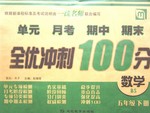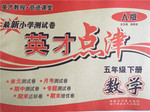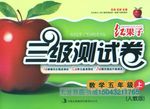题目内容
One of the most famous nursery rhymes(摇篮曲) in the English language is Mary Had a Little Lamb(羔羊).It has touched many children who have read it. It is about the deep love between a young girl and her pet lamb. The poem is from a true story that happened in the early part of the 19th century in the town of Sterling, Massachusetts, in the USA.
Mary Sawyer (1806-1889) lived on a farm with her family.One day, when she was about nine years old, she saw a little lamb that had just been born and left behind by its mother. It was very weak and looked as if it would die at very moment.Mary took pity on the lamb and spent the whole night looking after it.Eventually, it grew strong and became a very close friend with Mary, following her everywhere she went.
One day, the lamb even followed Mary to school.At first she wanted to turn it back but her brother suggested that it would be fun to take the lamb to school.During the class, she hid the lamb under her desk.But when she was called to go to the front of the class, to her surprise, the lamb followed her.Though the students and the teacher thought it was funny to see a lamb at school, the teacher had to ask Mary to keep the lamb outside of the school.
That very day, a young man called John Roulstone was visiting Mary’s school. He was so moved by the love between the child and her little pet lamb that he wrote a poem which he handed to Mary the next day. His poem contained twelve lines.
Later, Sara Josepha Hale added another twelve lines to the poem and published it in 1930 under the title “Mary Had a Little Lamb”. The poem has become a classic, loved by children all over the world. The appeal (吸引力) of the poem lies not only in the funny idea of a sheep going to school but also in the true love between the little girl and her pet. The town of Sterling has honoured Mary’s lamb by building a statue (雕像) of the lamb with Mr Roulstone’s poem below the statue.
1.What is the best title for the passage?
A.Mary Had a Little Lamb
B. The Life of Mary Sawyer
C.The Origin(起源) of a Poem
D. An Animal Friend
2.The underlined word “eventually” in the second paragraph most probably means .
A. gradually B. finally
C.fortunately D. kindly
3.Why did the poem become a classic?
A.It had another twelve lines added.
B.It was written by a young man.
C.It describes the true love between a little girl and her pet lamb.
D.A statue of lamb was built in the town of Sterling.
4.Which could be the right order of the following events according to the passage?
a.The poem “Mary Had a Little Lamb” became popular.
b.Mary’s brother suggested that she take the lamb to school.
c.People built a statue to honor the lamb.
d.Mary found a little lamb.
e.A young man was moved by the story and wrote a poem.
A. d. b. e. a. c
B. d. e. b. a. c
C. d. e. b. c. a
D. d. b. e. c. a
5.Which of the following statements can be inferred from the passage?
A.Mary’s mother was also fond of the little lamb.
B.Mary wrote to John Roulstone and asked him to write the poem.
C.All children were allowed to take their pets to school in America.
D.Mary and the little lamb developed a very close friendship.
1.A
2.B
3.C
4.A
5.D
【解析】
试题分析:本文讲述玛丽有一只小羊这首儿歌的来历
1.A 主旨标题。本文讲述玛丽有一只小羊这首儿歌的来历,故选A项。
2.B 词意猜测。根据第二段提到Mary took pity on the lamb and spent the whole night looking after it.Eventually, it grew strong and became a very close friend with Mary, following her everywhere she went玛丽对这个小羊羔感到很遗憾,整夜来照顾他,最后,它变得很强壮,成为玛丽最好的朋友,故选B项。
3.C 推断题。根据最后一段提到The poem has become a classic, loved by children all over the world. The appeal (吸引力) of the poem lies not only in the funny idea of a sheep going to school but also in the true love between the little girl and her pet.这首歌谣吸引人不仅仅在于带着小羊上学,还是因为两者之间这种真挚的爱,故选C项。
4.A 排序题。文章是玛丽发现一只小羊羔,她的哥哥建议他可以带去学校,一个年轻人被这个故事感动而写成了诗,这首诗变得很受欢迎,最后人们建立了一个雕像来纪念这只小羊羔,故选A项。
5.D 推断题。根据第二段提到Eventually, it grew strong and became a very close friend with Mary, following her everywhere she went.可知他们成为了亲密的好朋友,到哪都做伴,故选D项。
考点:文化类阅读。

 全优冲刺100分系列答案
全优冲刺100分系列答案 英才点津系列答案
英才点津系列答案 红果子三级测试卷系列答案
红果子三级测试卷系列答案